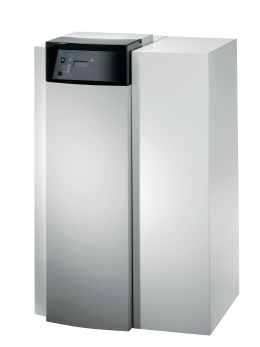Old heating systems meet new boilers

Replacing ageing boiler plant in heating systems has become an important undertaking in commercial buildings, but as Peter Gammon of ELCO Heating Solutions explains, there are some considerations to be made.
With the commercial heating sector accounting for around 17% of the UK’s carbon-dioxide emissions, the energy efficiency of the UK’s 1.8 million non-domestic buildings has risen up the Government agenda. Certainly, if the UK is to meet its ambitious carbon-reduction targets, the existing stock of buildings will need to be improved — and one of the most obvious places to start is heating and hot-water systems.
So, when replacing an old boiler with a new, high-performance energy-efficient version, what are the necessary considerations to ensure an effective retrofit?
Well, boiler replacements often present a common problem: a customer wishes to upgrade the boiler plant, but doesn’t want to refurbish the ageing heating system. This is usually due to financial restrictions, the belief that the existing equipment is still fine for operation, or the need to avoid the intrusion/disruption associated with a complete system replacement.
In such a scenario, there is a strong possibility that an older system won’t have benefitted from water treatment. Consequently, it will have suffered progressive corrosion over the years, leading to considerable quantities of ferric debris (magnetite sludge) to be present in the low-velocity and sump areas of the system.
Although not desirable, the existence of the sludge deposits is unlikely to be causing any significant difficulties.
However, when a system containing large quantities of sludge deposits is drained down and left empty long enough for the detritus to dry-out, upon refilling, the now friable deposits are washed from the sump areas to almost all parts of the system. This can include the new boilers, pumps and valves, with the potential to cause serious difficulties with the new equipment. This may not have been too much of a problem in older-style/design boilers, as the silt would be spread thinly across large, low-velocity waterways. However, with modern condensing boilers, Silt can cause major problems — with the possibility of blocked tubes or waterways, overheating, nuisance operating and kettling noise. Worse still, the deposits can act as an insulator in a boiler’s heat exchanger, causing it to retain heat and fail prematurely. Thorough system cleansing and flushing can avoid these scenarios, but it is often not possible to be certain that a flushing operation has been effective.
Instead, there is a simple solution — a plate type heat exchanger. This acts as a separator, or barrier, between the retained existing system and the new boiler plant, allowing a clean ‘mini-environment’ to be created on the primary side.
By separating the new plant from the old system, the water can be treated on the boiler side, extending the life of the unit, as well as enabling a sealed and pressurised high-efficiency boiler to be installed.
The old system, which may be ‘open vented’, can remain that way, while allowing the new boiler plant to be easily pre-commission cleansed without the associated problems of cleaning an old system and/or converting it to sealed and pressurised.

For specifiers, using a plate heat exchanger is not only best practice, but also easy to achieve. Certain high-performance commercial units, such as the Trigon L boiler from Elco, include an option for a built-in plate type heat exchanger within the case. So, not only can a new boiler be installed onto an old system, there is also no requirement for additional space in the plant room. All that is required for a successful retrofit is a temperature difference between the primary and secondary sides across the heat exchanger.
Another common strategy to consider when upgrading/refurbishing commercial boiler plant is a cascade arrangement. One of the main benefits of operating multiple boilers is deeper turndown ratios, so while one boiler might give a 6:1 turndown rate, a cascade system comprising several boilers could deliver 30:1 — producing improved seasonal efficiencies, lower fuel costs and a significant reduction in emissions.
Of course, using a cascade arrangement requires a suitable control strategy. A cascade control system, for example, will allow two or more boilers to be modulated up or down, or switched on or off when the heating load changes. This maximises efficiency, improves fuel consumption and reduces wear and tear on the boilers.
Other controls to consider include weather compensation. Some boilers, such as our Thision S Plus, feature direct-on-boiler weather compensation, which has the ability to adjust the system flow temperature relative to outside climate variation.
With the non-domestic sector requiring huge improvements in energy efficiency over the coming years, the need to update boiler plant will continue to increase. Consequently, the installation process will always require careful consideration, especially when the system is ageing.
However, contemplating the benefits of a plate heat exchanger, specifying a cascade system or upgrading controls are all areas that should be considered in order to maximise a retrofit’s energy-saving potential.
Peter Gammon is technical manager with Elco Heating Solutions.








